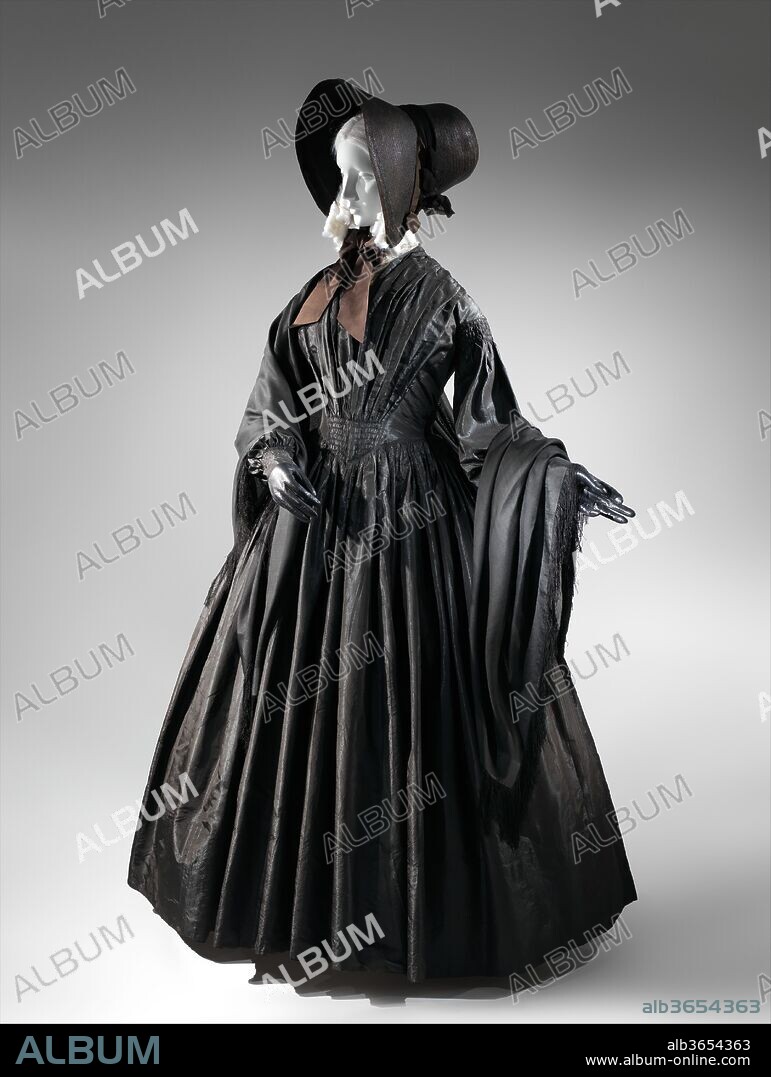alb3654363
mourning dress

|
Add to another lightbox |
|
Add to another lightbox |



Title:
mourning dress
Caption:
Mourning dress. Culture: American. Date: ca. 1845.
During the first half of the nineteenth century, the growing circulation of fashion magazines offering guidance on appropriate mourning styles increased demand for mourning attire, which became an indicator of middle-class status. Those unable to afford the purchase of a new mourning wardrobe could dye existing garments and accessories black, while others turned to a range of retailers. Shops specializing in mourning goods had existed since the eighteenth century, though by the mid-nineteenth century they operated on a greatly enhanced scale, aided by the mechanization of the textile industry, which permitted the mass-production of fabrics. From the 1840s, mourning warehouses--grand purveyors of mourning goods--were founded in many European and American cities, making such merchandise widely available. These establishments offered a variety of mourning fabrics and accessories, and many also offered the sewing of finished garments, emphasizing their ability to work at great speed.
Technique/material:
SILK
Museum:
Metropolitan Museum of Art, New York, USA
Credit:
Album / Metropolitan Museum of Art, NY
Releases:
Model: No - Property: No
Rights questions?
Rights questions?
Image size:
3220 x 4279 px | 39.4 MB
Print size:
27.3 x 36.2 cm | 10.7 x 14.3 in (300 dpi)
 Pinterest
Pinterest Twitter
Twitter Facebook
Facebook Copy link
Copy link Email
Email

